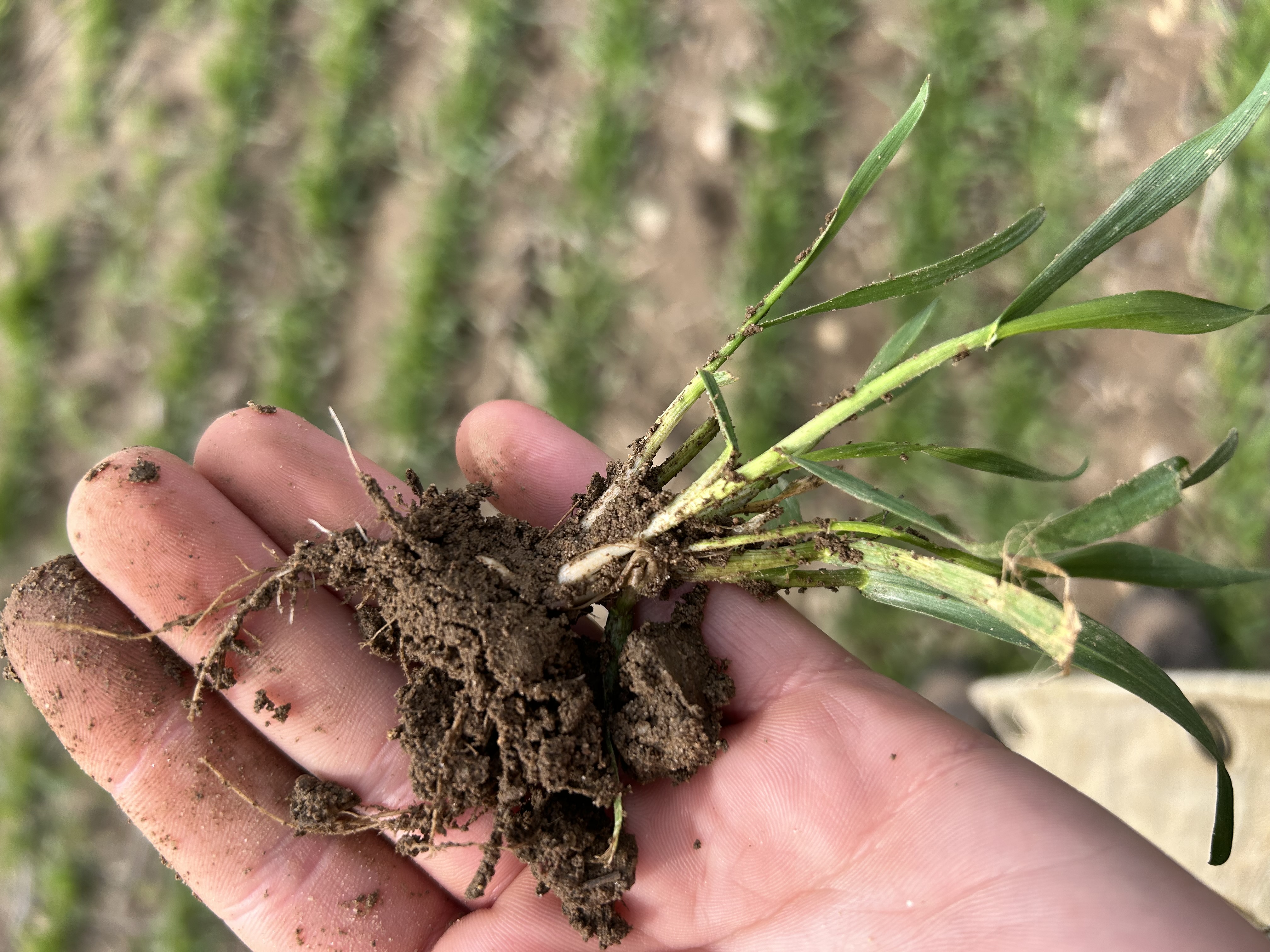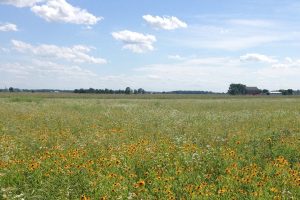Wheat Watchers week of March 31, 2025
See how the wheat crop is progressing across the state this week.

Welcome to the start of this season’s Wheat Watchers! This report will come out weekly until most of the state hits flower and then will switch to bi-weekly until most of the state has harvested. This report is only possible because of our agribusiness and farmers who participate as wheat watchers. If you are interested in being a wheat watcher, especially if you see your area isn’t represented, please reach out to Michigan State University Extension field crops educator Jenna Falor at falorjen@msu.edu.
Overall, this week reporters are seeing wheat stands in good condition ranging in Feekes growth stage 3-4.
Southwest region
We had three wheat watchers reporting from southwest region: one from St. Joseph County near Centreville, one from Barry County near Hickory Corners and the other from Allegan County near Wayland. Wheat is reported to be at Feekes 3-4. The wheat watcher near Centreville is reporting that there have been high winds and a tornado that flipped several pivots in the area over and caused some debris in fields. Some fertilizer went out last week, with more planning on being applied when the fields dry out enough to get out on the fields again. There have been lots of rain recently, but it hasn’t really been affecting the wheat.
The wheat watcher near Wayland is reporting that 50% of early nitrogen has been applied. Pockets of snow mold on early planted wheat and winter annuals are coming on strong. Development slowed with the return of more normal cooler temperatures.
The watcher near Hickory Corners is reporting some fertilization occurred in the area.

Southeast region
We had two wheat watchers reporting from southwest Michigan: one in Jackson County near Jackson and one in Monroe County near Ida. Wheat has reached a Feekes 3 and has hit green up. Both watchers are reporting that a lot of green up nitrogen has been applied over the past week, with the watcher near Jackson reporting 30-70% of acres having nitrogen applied depending if the fields were dry enough to get into. The watcher near Ida reports a few spots of winter kill, but it appears very minimal. They are very happy for a timely rain to get the nitrogen incorporated.
The watcher near Jackson reports some chickweed and bluegrass beginning to appear. There is also concern that some nitrogen that was applied may have been lost due to heavy rains and that the recent rains will slow any remining nitrogen applications.

East central (Thumb) region
We had two wheat watchers reporting from the Thumb, both from Huron County near Elkton and Ubly. Wheat has reached Feekes 3. There has been very little field work across the area but there have been limited nitrogen applications. There has been some clover frost seeded in Sanilac County.
Central region
We had four wheat watchers reporting from the central region: one in Isabella County near Mount Pleasant, one in Ingham County near Mason, one in Montcalm County near Stanton and one in Saginaw County near Richville. Wheat is reported at Feekes 2-4. The watcher near Mason is reporting Feekes 3-4, the watcher near Stanton is reporting Feekes 2 and the watchers in Saginaw and Isabella counties are reporting early green-up.
While wheat in Isabella County is at green-up, nitrogen applications have stopped due to the weather. In Richville, some applications of green-up nitrogen have been occurring and farmers are beginning to schedule herbicide applications. Common chickweed and winter annuals are starting to peek through in Richville, and some ponding of water is visible.
Near Mason, annual broadleaf weeds are just starting to appear as well as annual bluegrass. Some early nitrogen applications have been made, most of them with sulfur included. Some fields have had winterkill and some of the early planted wheat that had tillered well have some snow mold. There has been limited water ponding this year compared to previous years.
West central region
We had one wheat watcher reporting from the west central region in Mason County near Scottville. Wheat is still dormant at Feekes 3. No field work has been performed as it is too wet and there is some water ponding in fields.
North region
We had no wheat watchers reporting from the northern region this week.
Notes from Dennis Pennington
One of the ways to tell that wheat has broken dormancy and is greening up is when the first white roots begin to show, which is just now occurring through a lot of the state. Dennis Pennington, Michigan State University Extension wheat systems specialist, says there have been a few reports of severe snow mold damage in localized areas of fields. Also, the growing degree-day accumulations are behind last year. The crop seems to be coming out of dormancy much slower this year, but at a closer to normal pace.
This work is supported by the Crop Protection and Pest Management Program [grant no 2024-70006-43569] from the USDA National Institute of Food and Agriculture. Any opinions, findings, conclusions, or recommendations expressed in this publication are those of the author(s) and do not necessarily reflect the view of the U.S. Department of Agriculture.



 Print
Print Email
Email




